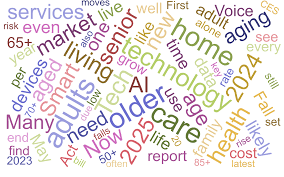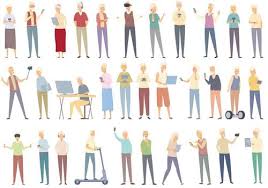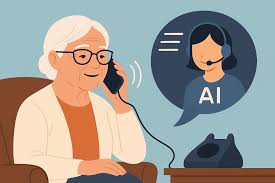The United States faces a fundamental mismatch between surging demand and insufficient capacity.
2026 Physician Fee Schedule, released in July, directs reimbursement toward remote monitoring and value-based care in the home.
Older adults can save tens of thousands of dollars annually by choosing assisted living communities over aging in place in their homes.
Unlike point solutions, Inspiren unifies resident safety, care planning, staffing, and emergency response into a single AI-powered platform.

 The B
The B Tech users today span all ages. Published at around the same time as the
Tech users today span all ages. Published at around the same time as the  As they do each year since 2016, AARP surveys the 50+ about tech. AARP’s new
As they do each year since 2016, AARP surveys the 50+ about tech. AARP’s new  January 2026 marks a notable milestone for senior care. In a few weeks, the oldest baby boomers begin to turn 80-- with a
January 2026 marks a notable milestone for senior care. In a few weeks, the oldest baby boomers begin to turn 80-- with a  We all just want more effective help online. We want information, we need suggestions, even helping us with tasks by doing the work for us. Oh, and we would even like the advice to be timely and accurate! Over the past few years, as people were exploring
We all just want more effective help online. We want information, we need suggestions, even helping us with tasks by doing the work for us. Oh, and we would even like the advice to be timely and accurate! Over the past few years, as people were exploring  cusp of the utility of AI agents. Ironically, or maybe not so much, that improvement is inversely proportional to the diminished availability of people to solve our problems. We see bits and pieces of the decline of people in processes we need. Whether it is the sign-in kiosk in the healthcare waiting room, the check-in process at the airport, automated creation of pharmacy refill requests, or the customer service ‘interface’ that is now nearly all AI. And screaming ‘agent’ may still not bring the actual person to the phone. What’s positive and likely? [Information is drawn from interviews about “The Future of AI and Older Adults 2030.” Scheduled to be published in early January 2026]
cusp of the utility of AI agents. Ironically, or maybe not so much, that improvement is inversely proportional to the diminished availability of people to solve our problems. We see bits and pieces of the decline of people in processes we need. Whether it is the sign-in kiosk in the healthcare waiting room, the check-in process at the airport, automated creation of pharmacy refill requests, or the customer service ‘interface’ that is now nearly all AI. And screaming ‘agent’ may still not bring the actual person to the phone. What’s positive and likely? [Information is drawn from interviews about “The Future of AI and Older Adults 2030.” Scheduled to be published in early January 2026] January 2026 is just around the corner. And so will begin the wave of
January 2026 is just around the corner. And so will begin the wave of  Aging in place makes the senior living industry anxious. A new article from
Aging in place makes the senior living industry anxious. A new article from  As interviews begin, ideas for the future of AI and older adults are emerging. For the updated report,
As interviews begin, ideas for the future of AI and older adults are emerging. For the updated report,  Is everything now voice-enabled -- so that transition is done? Whine On. Is the response smart or, uh, just a response? Just tried an experiment, asking via Hey Siri for the best technologies to use for people with dementia. Got a nice and brief summary. Next pass, skipped the ‘Hey Siri’ part, asked the same question. This time it offered up the possibility of using ChatGPT which produced a long and useful list. So it appears
Is everything now voice-enabled -- so that transition is done? Whine On. Is the response smart or, uh, just a response? Just tried an experiment, asking via Hey Siri for the best technologies to use for people with dementia. Got a nice and brief summary. Next pass, skipped the ‘Hey Siri’ part, asked the same question. This time it offered up the possibility of using ChatGPT which produced a long and useful list. So it appears